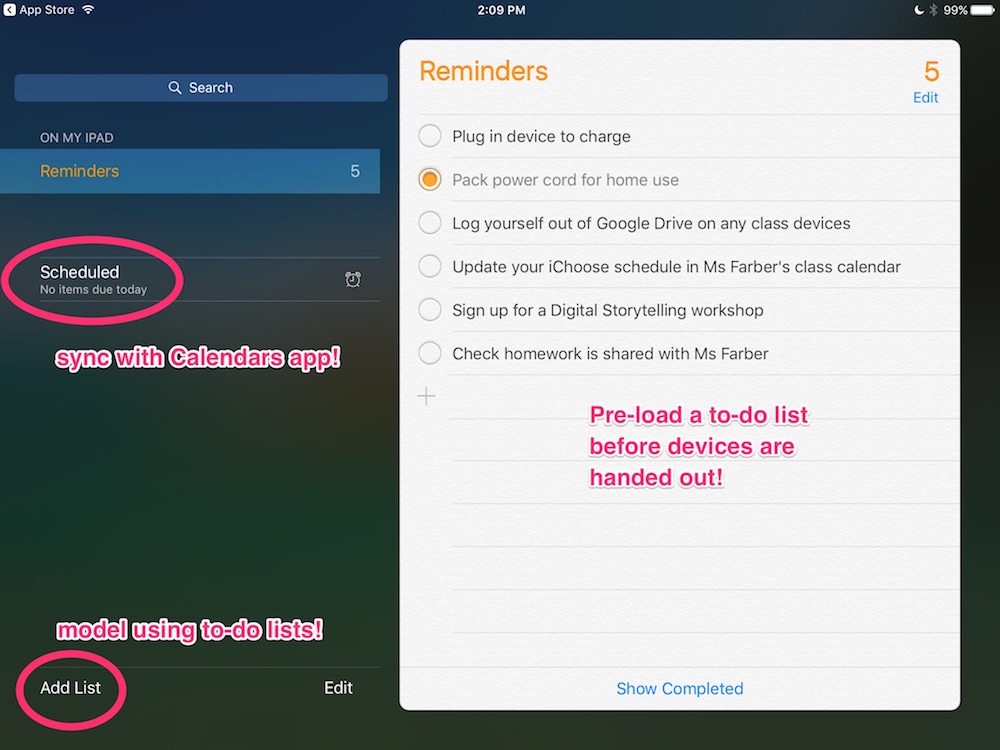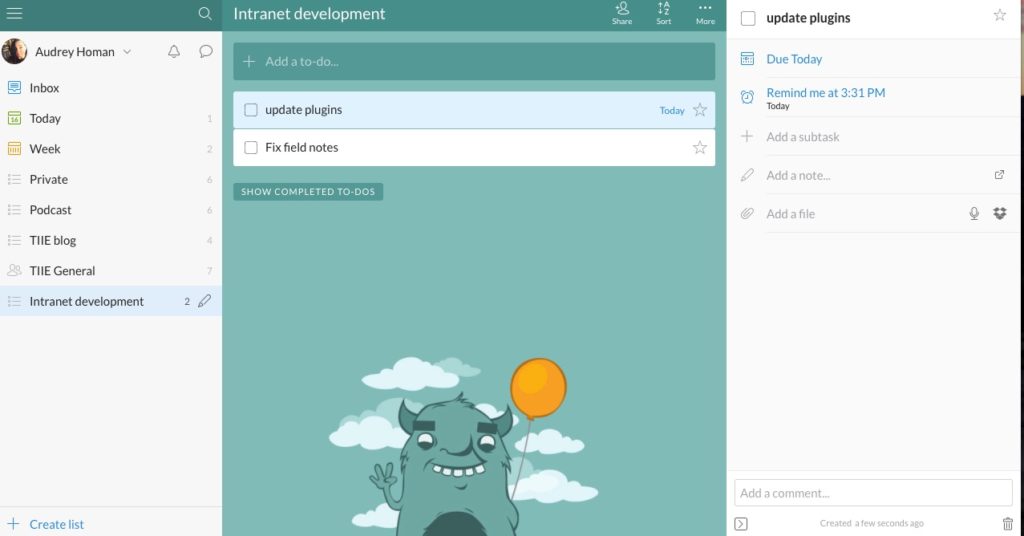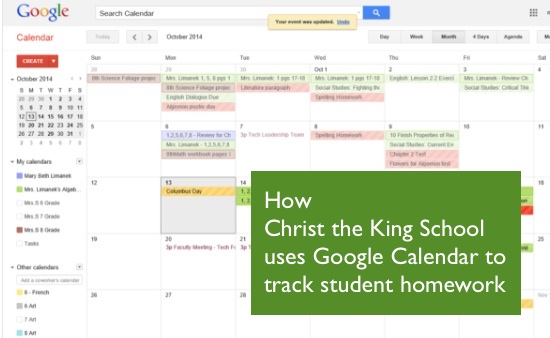Helping students get organized
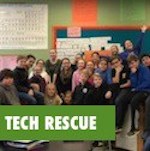 Middle schoolers’ lives are multi-faceted, dynamic and dramatic. And while we talk about how to grow self-directed, engaged and motivated students, that growth can’t take place while students are overwhelmed and anxious about managing their daily lives.
Middle schoolers’ lives are multi-faceted, dynamic and dramatic. And while we talk about how to grow self-directed, engaged and motivated students, that growth can’t take place while students are overwhelmed and anxious about managing their daily lives.
Last time, we looked at how to organize the tech itself. Now let’s look at how to use powerful tech tools (shiny!) to help make middle school manageable.
1. Checklists
Possibly the least tech-powered tool ever, right? A-ha! The humble list might be old school, but tools for wrangling them are decidedly next gen*. A few examples:
- 1:1 with iOS? As part of your device profile, pre-load a to-do list in the Reminders app. Sync that puppy with the Calendar app.
- Padlet was maaaaade for to-do lists. Set up a class board and conduct class discussions to build the to-do lists you’ll need as a group to stay organized.
- Google Classroom incorporates to-do lists by default, because it is just that fancy. Look under the Classroom Menu > Assignments. As students turn in assignments, they’re automatically checked off the list.
- Looking for a super-powered taskmaster? Our fave is Wunderlist: free iOS app, Mac OS app, online version: they all sync up. Plus you can share lists, create subtasks and folders, set due dates and reminders. It has customizable backgrounds! And best of all, when you check something off, it makes a quiet dinging noise. That’s going to be awesome in a middle school classroom, guaranteed.
2. The digital portfolio as virtual Trapper-Keeper
One clear benefit of the PLP is that students can collect and curate evidence of their learning, creating a story of their interests, hobbies, challenges, and success as learners. These portfolios can be a Google Site, a blogger blog, or a profile on Protean or Schoology. Students can take pictures and upload their work, therefore skipping the struggle to find and keep in real life papers and portfolios.
Some additional benefits?
- Most tools have private vs public settings for work, giving students a chance to revise drafts before sharing
- Customizable environments encourage students to make the space their own; it’s like when they open the door to their bedroom and throw things inside: all those pieces of learning evidence now have an online place.
The other thing about the customizable nature of a good digital portfolio tool is the ability to create personally relevant tabs or sections. That way if a student is struggling with keeping track of homework assignments, for example, or looking for a way to stay organized specifically with math topics, they can create tabs to collect just those particular resources.
3. Harness students’ creativity in sharing strategies
What works to keep one student organized may not work for the rest. But maybe it could work for one other student. One way to find out: share those organizational strategies!
Make videos
Check out this student-made video on the horrors of disorganization, and more specifically, ways those particular students have managed to get organized.
Could your students create videos like this to share at the beginning of the year? What about hosting a film festival around a problem area, such as device management? Films could showcase students’ innovative solutions, then the class could vote on a solution to try!
What about a wiki?
How about your students creating a version of this wiki How for the school or class?
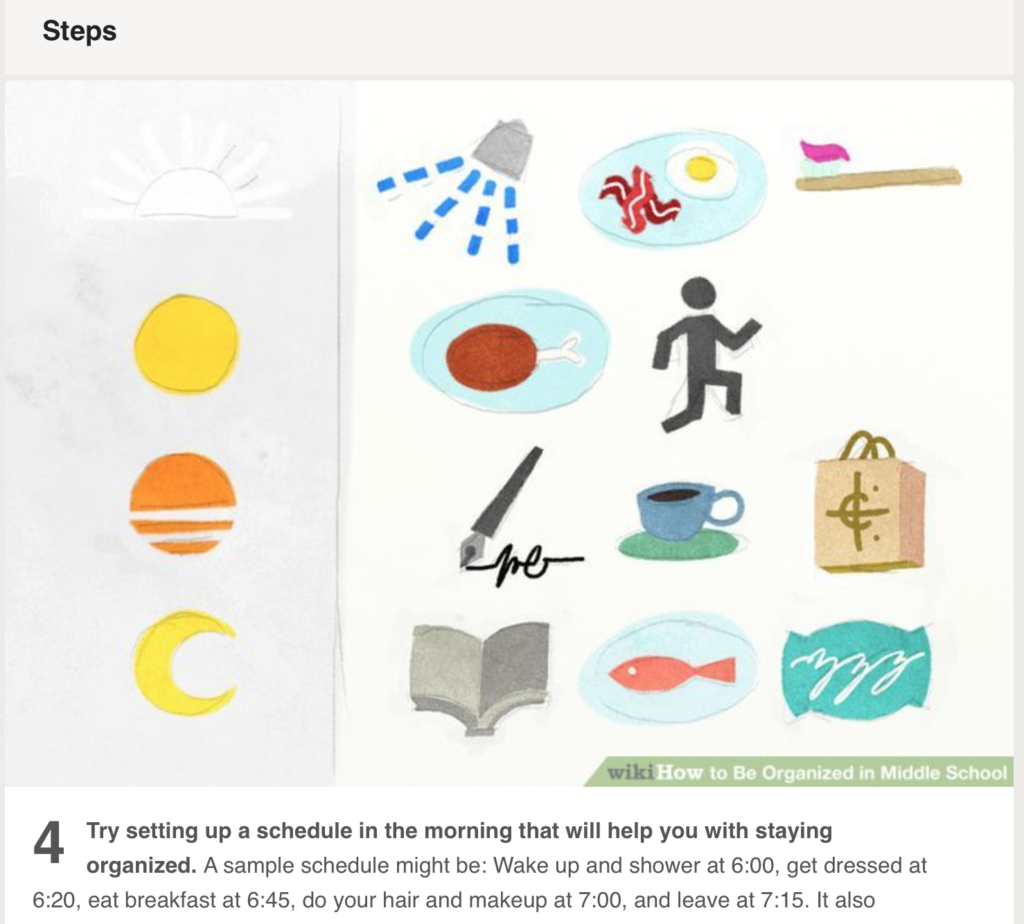
Students could create something like this for class or school device management, hopefully using fewer DON’Ts.
http://www.slideshare.net/LClendinning/computer-care-for-kids-11846810
4. Create accountability with family communication
Sometimes it’s easier to stay organized with a friendly voice (or two or three) giving you a couple reminders. Tap into family support in helping students get (or stay!) organized. Here are some low-effort / high-tech ways to rope families into helping with organization.
The Shared Calendar
Christ the King School uses Google Calendar to help keep families in the loop about student deadlines, activities, school events and extra-curricular activities. Students and families both can use the calendar’s many views to practice medium- and long-range planning, keeping everyone on track.
Could this work at your school?
The Shared Wunderlist
Remember our friend the Wunderlist app, from the start of this beautiful beautiful blogpost?
One of the coolest things about Wunderlist is that you can have lists that whole teams can access. Add a family email address to a student account — or only to a few of their lists — to loop families into what students are accomplishing, and what they could use more help with. Wunderlist’s commenting feature also makes it easy for family members to leave supportive comments as students cross items off their to-do lists!
Why are we doing this?
If you thought the common thread running through these suggestions is tech, think again. It’s really all about sharing. Think of you, your student and their family as a team, all working towards one goal: helping that student make the most of their middle school years.
Take it easy, take it easy. Don’t let the sounds of middle school wheels drive you crazy.
(How did Don Henley ever get away with rhyming those?)
We know: this is a lot. Where to start?
- Pick a problem area
- Review resources above
- Select a creative approach
- Ask the students for feedback and help, but mostly feedback
- Conquer the world with student organization!
How do you help keep middle school students organized and ready for life experiences?


